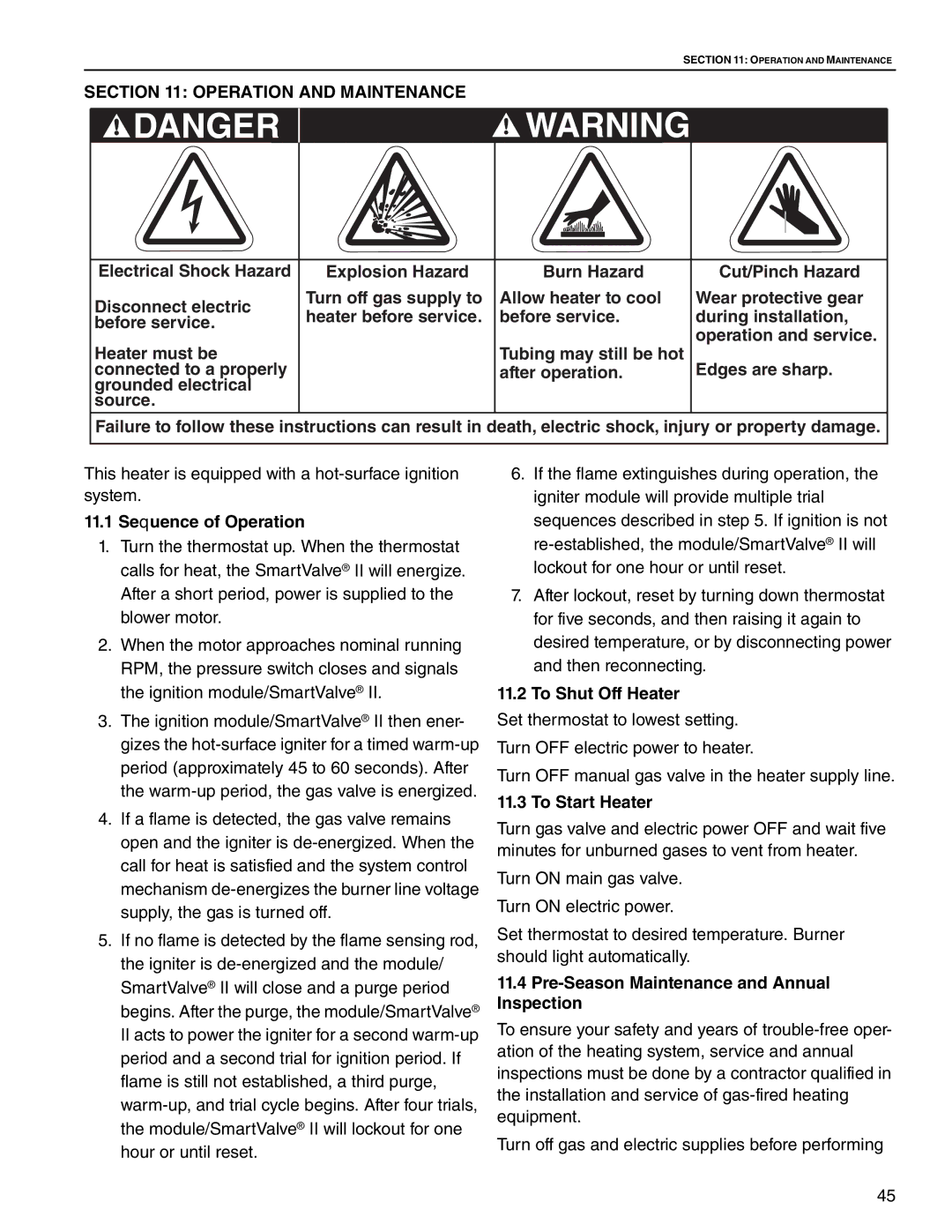CTH2-40 CTH2-60, CTH2-175, CTH2-150, CTH2-100, CTH2-80 specifications
Roberts Gorden is a reputable name in the field of heating and energy efficiency, and its CTH2 series of infrared radiant heaters—including the CTH2-150, CTH2-80, CTH2-125, CTH2-100, and CTH2-175—are a testament to innovation and quality. Designed for commercial and industrial spaces, these heaters provide effective and efficient heating solutions tailored to various needs.The CTH2 series employs advanced infrared heating technology, which radiates warmth directly to objects and individuals in the space rather than heating the air. This method ensures rapid heat-up times and energy conservation, making the heaters ideal for workshops, warehouses, and other large areas where traditional heating systems may be inefficient.
One of the main features of the CTH2 series is its high thermal efficiency. The heaters convert a significant portion of the energy consumed into usable heat, resulting in lower operational costs and a reduced carbon footprint. The CTH2 models utilize durable components designed to withstand the rigors of industrial environments, ensuring longevity and reliable performance.
The CTH2-150, CTH2-80, CTH2-125, CTH2-100, and CTH2-175 models vary in output capacity and design, providing flexibility for different heating requirements. The maximum heat output ranges significantly among the models, with the CTH2-175 offering the highest thermal output, making it suitable for larger spaces or areas requiring immediate and intense heating. Conversely, the CTH2-80 is ideal for smaller areas or those that require less heat.
Installation versatility is another key characteristic of the CTH2 series. These heaters can be mounted from the ceiling or installed horizontally or vertically, accommodating different building layouts and operational needs. The heaters are also designed for easy maintenance, featuring accessible components to facilitate routine checks and repairs.
The CTH2 series incorporates safety features such as overheat protection and flame safeguard systems, ensuring safe operation even in busy industrial settings. Additionally, their sleek and modern design allows them to integrate seamlessly with existing infrastructure without detracting from the overall aesthetic of the space.
In conclusion, Roberts Gorden’s CTH2 series—including the CTH2-150, CTH2-80, CTH2-125, CTH2-100, and CTH2-175—represents a pinnacle of infrared heating technology. With their impressive efficiency, customizable output, versatile installation options, and robust safety features, these heaters are a reliable choice for any commercial or industrial heating requirement.

